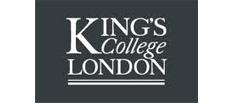Observing cells and tissues
The practical acitivities listed here allow students to become familiar with using a microscope to observe a variety of cells.
Visit the practical work page to access all resources and lists focussing on practical work in secondary science: www.nationalstemcentre.org.uk/sciencepracticals
Using Models
This resource provides ideas for developing a sequence of 'good enough' cell models to explore how cells can form tissues and organs.
Modelling a simple animal and plant cell can be done as a demonstration intitially, discussing what each part of the model represents and relating it to what can be seen under the microscope. The image from the microscope could be projected onto a white board using a webcam.
Students can then create their own models of simple and specialised cells. When modelling cells, discussing the strengths and weaknesses of the model can draw out misconceptions. For example, having viewed cells as images or under a microscope, students can easily believe that they are two-dimensional.
Carefully planned group work with explicit aims can encourage students to relate structure to function, extending the activity to allow connections to be made between between the practical work and scientific ideas.
Observing Starch Grains in Banana Cells
Banana cells are useful for observing starch grains, which are visible when the cells are stained with Lugol. This practical can be used to introduce staining as a technique in slide preparation, and students can look at the cells with and without staining and compare the difference.
Looking at Xylem and specialised cells
Once students have looked at basic plant and animal cells under the microscope, they can begin to explore a variety of specialised cells.
This resource suggests looking at trichomes in tomatos and xylem vessels in carnations. Students can work in groups to to compare and contrast these cells with a basic plant cell and relate structure to function.
A World in a Hanging Drop
The hanging drop technique is a well-established method for examining living, often unicellular organisms without the need for staining. This is a slightly updated proceedure using apparatus which is cheaper, more robust and less fiddly.
There are other methods of observing euglena depending on the equipment you have available, such as using vaseline to create a well on the slide or using deep well slides as described below.
Microorganisms on the move
In this activity, students learn how to prepare deep well slides for observing Paramecium and euglena. After observing these microorganisms through a microscope, students can compare and contrast the physical characteristics of each type of microorganism.
This practical can be combined with the IDEAS resources, included below, to encourage students to think critically about their observations.
IDEAS Resources
The cards in activity 5 (page 20) of this resource can be used to extend students' observations of euglena by considering whether euglena are plant or animal cells.
Students evaluate their own observations and the evidence presented on the cards to support their point of view about euglena. Since some of the evidence can be ambiguous and could indicate that euglena is both an animal cell and a plant cell (e.g. it moves and it has chlorophyll), the activity provides an opportunity to generate cognitive conflict for students.
Chicken Leg Dissection
This practical allows students to observe a number of tissue types, including muscle, connective tissue, adipose and bone. It could be carried out as a whole class demonstration, but given that chicken legs are relatively cheap and easily available it works well if students work in pairs to dissect one.
The idea of cells forming tissues can be demonstrated before the practical using model cells made from water filled plastic bags laid on top of each other in a glass trough.
Learning would be strengthened through the provision of a clear set of instructions with step by step photographs and prompts so that students know what they are looking for. Questions could be included to guide observations and support discussion as the students work in pairs to examine the leg.
As with all practical work involving food products, be aware of cultural sensitivities.


